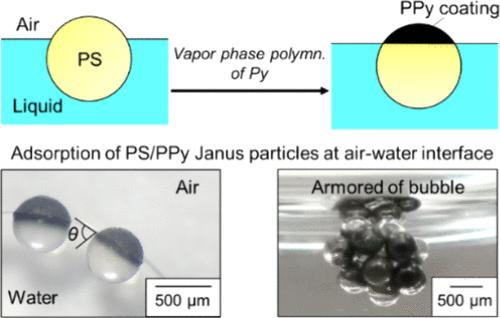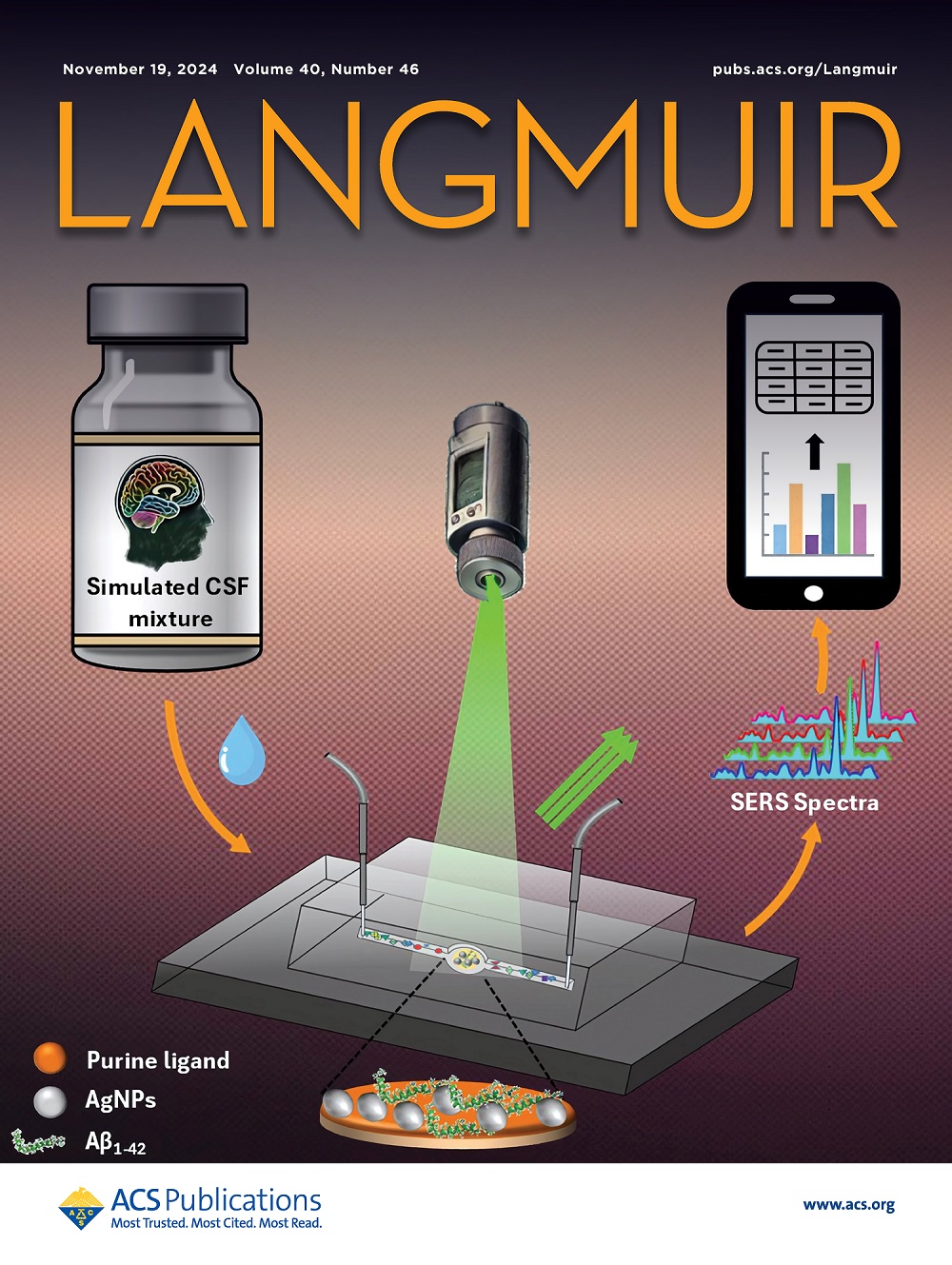Janus Particles Synthesized via Vapor-Phase Coupling Polymerization Protocol
IF 3.9
2区 化学
Q2 CHEMISTRY, MULTIDISCIPLINARY
引用次数: 0
Abstract
The vapor-phase polymerization of pyrrole in the presence of polystyrene (PS) particles adsorbed at the air–water interface successfully leads to the formation of PS/polypyrrole (PPy) Janus particles where only the surface in contact with the air phase is regioselectively covered with the PPy nanolayer. The coverage area of the PPy nanolayer on the Janus particles, and therefore the contact angle of Janus particles at the air–liquid interface, decreases with a decrease in surface tension of liquid by the addition of isopropanol. The contact angle of particles at the interface decreases after the polymerization, which should be because the pyrrole monomer dissolved in the water phase from the gas phase promotes the wetting of the liquid to the PS particles by decreasing the surface tension of the liquid. Controlling the PS particle size realizes the formation of PS/PPy Janus particles with sizes ranging between 5 and 1000 μm. Furthermore, the Janus particles are demonstrated to be oriented at the air–water interface with the hydrophilic PS side toward the water phase and the hydrophobic PPy side toward the air phase, realizing stabilization of an armored bubble in the water medium.

气相耦合聚合法合成Janus颗粒
在空气-水界面上吸附有聚苯乙烯(PS)颗粒的情况下,吡咯的气相聚合反应成功地形成了 PS/ 聚吡咯(PPy)Janus 颗粒,其中只有与气相接触的表面被 PPy 纳米层区域选择性地覆盖。随着异丙醇的加入降低了液体的表面张力,PPy 纳米层在 Janus 颗粒上的覆盖面积以及 Janus 颗粒在气液界面上的接触角也随之减小。聚合后颗粒在界面上的接触角减小,这应该是因为从气相溶解到水相中的吡咯单体通过降低液体的表面张力促进了液体对 PS 颗粒的润湿。通过控制 PS 粒子的大小,可以形成 5 至 1000 μm 大小的 PS/PPy Janus 粒子。此外,还证明了 Janus 粒子在空气-水界面上的取向,亲水的 PS 侧朝向水相,疏水的 PPy 侧朝向气相,从而实现了铠装气泡在水介质中的稳定。
本文章由计算机程序翻译,如有差异,请以英文原文为准。
求助全文
约1分钟内获得全文
求助全文
来源期刊

Langmuir
化学-材料科学:综合
CiteScore
6.50
自引率
10.30%
发文量
1464
审稿时长
2.1 months
期刊介绍:
Langmuir is an interdisciplinary journal publishing articles in the following subject categories:
Colloids: surfactants and self-assembly, dispersions, emulsions, foams
Interfaces: adsorption, reactions, films, forces
Biological Interfaces: biocolloids, biomolecular and biomimetic materials
Materials: nano- and mesostructured materials, polymers, gels, liquid crystals
Electrochemistry: interfacial charge transfer, charge transport, electrocatalysis, electrokinetic phenomena, bioelectrochemistry
Devices and Applications: sensors, fluidics, patterning, catalysis, photonic crystals
However, when high-impact, original work is submitted that does not fit within the above categories, decisions to accept or decline such papers will be based on one criteria: What Would Irving Do?
Langmuir ranks #2 in citations out of 136 journals in the category of Physical Chemistry with 113,157 total citations. The journal received an Impact Factor of 4.384*.
This journal is also indexed in the categories of Materials Science (ranked #1) and Multidisciplinary Chemistry (ranked #5).
 求助内容:
求助内容: 应助结果提醒方式:
应助结果提醒方式:


